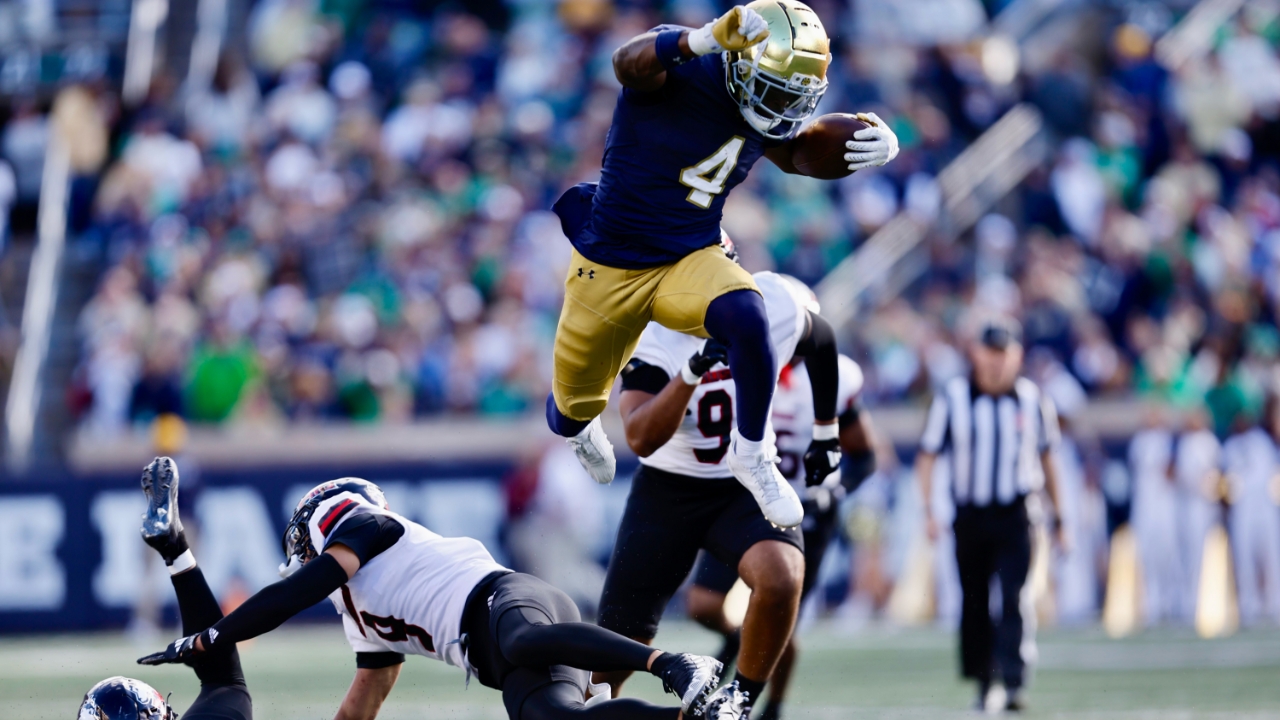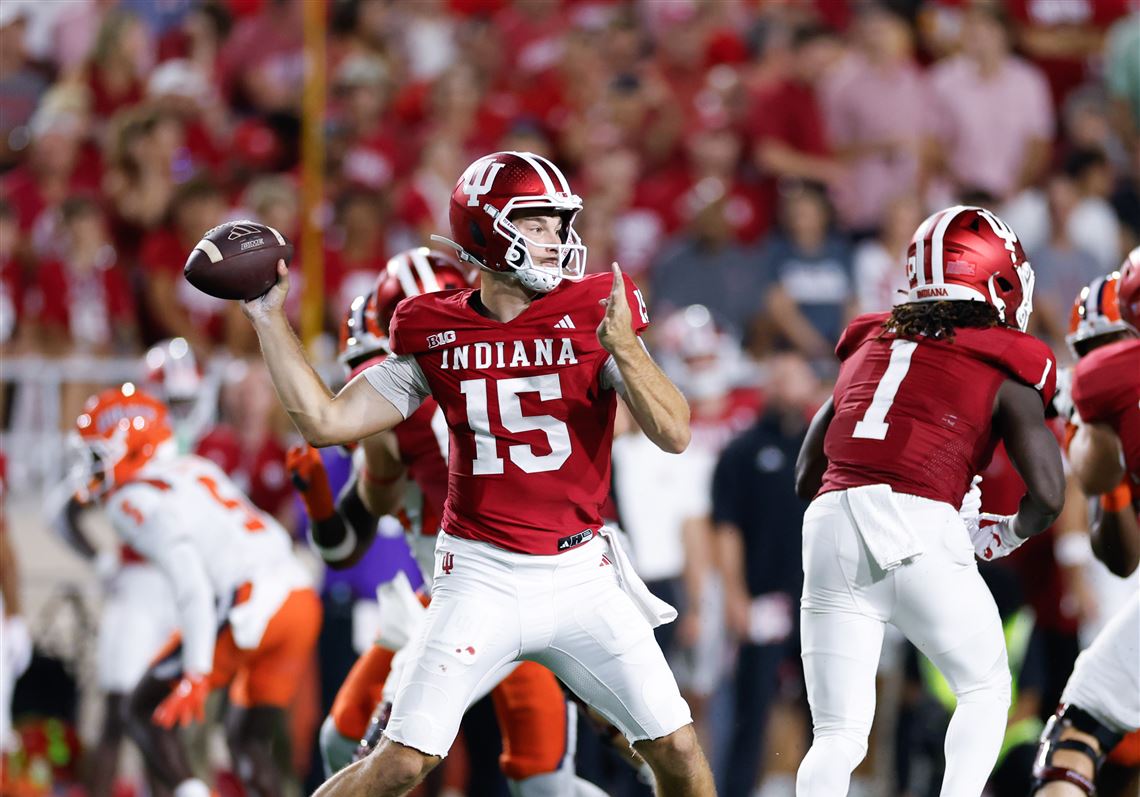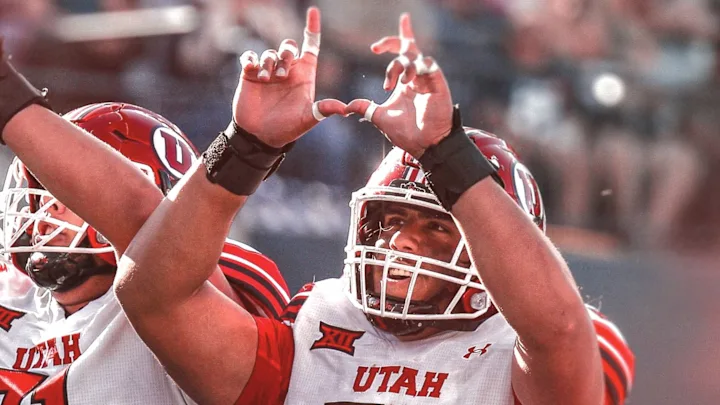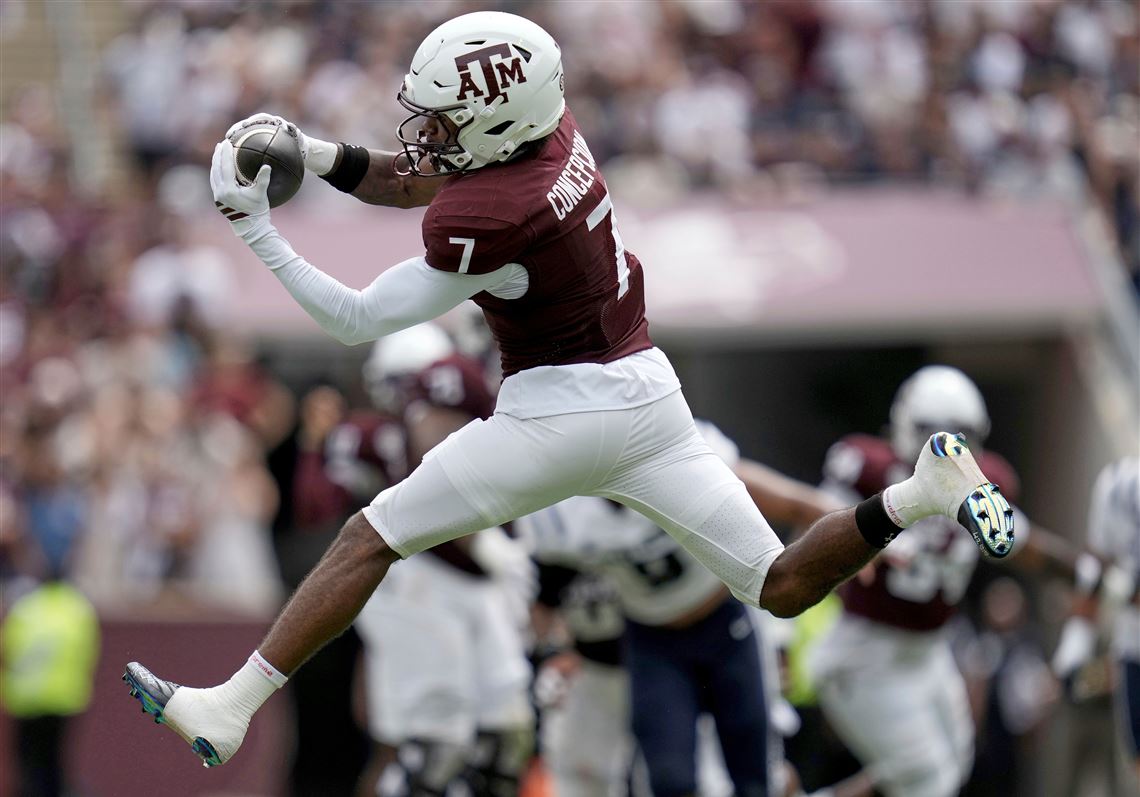By Charlie Campbell.
Send Charlie an e-mail here: [email protected]
Follow Charlie on Twitter @draftcampbell for updates.
This page was last updated March 13, 2015. Follow me @walterfootball for updates.
Position Review: Guards
Guard Class
Early-round talent: A-
Mid-round: B+
Late-round: B
Overall grade: B+
2015 prospects vs 2014
Brandon Scherff > Xavier Su’a-Filo
Arie Kouandjio > Spencer Long
Josue Matias > Gabe Jackson
Laken Tomlinson > Chris Watt
A.J. Cann > Trai Turner
Jeremiah Poutasi > Brandon Linder
Tre Jackson < Brandon Thomas
Jarvis Harrison > Dakota Dozier
Guard was one of the strongest positions in the 2013 draft class with the likes of Jonathan Cooper, Chance Warmack, Justin Pugh, Kyle Long and Larry Warford. The 2014 class wasn’t even close to being as good. While 2015 isn’t in the same league as two years ago, it is stronger than last year.
If you were to merge the two classes, it wouldn’t look good for 2014. Su’a-Filo would go behind of Scherff but ahead of Kouandjio. The third-rounders Long and Jackson would go behind Tomlinson. Long and Jackson are about equal to Cann and Poutasi. Thomas would go ahead of Jackson, and Harrison would go behind Thomas.
Safest Pick: Brandon Scherff, Iowa

The only guard who has a real shot to be a first-round pick this year is Scherff, and he is clearly one of the most NFL ready offensive linemen. At guard, I think Scherff is one of the safest picks in the 2015 NFL Draft. He is extremely strong to be a road-grading run-blocker at the point of attack. While Scherff doesn’t have the pass-protection skills for left tackle in the NFL, his pass blocking should be very good for a guard. The 6-foot-5, 319-pounder should go in the top half of the first round and could quickly become a Pro Bowl guard.
Previous Picks:
2014: Xavier Su’a’Filo
2013: Chance Warmack
Biggest Bust Potential: Jeremiah Poutasi, Utah

This was a tough choice because none of the guard prospects in the first three rounds looks like he has serious bust potential. I went with Poutasi (6-5, 335) because I could see him having some weight issues that hurt his ability to pass block against speed rushers. At the Combine, he didn’t look all that quick or athletic, so I think he’s going to need some development as a pass-protector.
Previous Picks:
2014: Chris Watt
2013: Brian Winters
Guard Rankings by Attributes
Pass Protection:
NFL prototype: Jahri Evans, Saints
- Brandon Scherff
- Josue Matias
- Arie Kouandjio
- Tre Jackson
- Laken Tomlinson
- A.J. Cann
- Jarvis Harrison
- Jeremiah Poutasi
Recap: The NFL is a passing-driven league, so keeping a clean pocket as a pass-blocker is the attribute that the majority of teams consider first. Coaches want the guards to keep defensive tackles from gaining penetration or causing disruption. If the guards are successful, quarterbacks can step up in the pocket to avoid edge-rushers. This helps out the offensive tackles significantly. Plus, good guard play provides better throwing lanes for the quarterback. This is why the Saints are one team that invests more money in guards instead of tackles.
Scherff is quick and athletic. Aside from the Maryland game in 2014, he was an asset as a pass-blocker in college, and that should be a strength in the NFL. After taking on fast edge rushers, interior speed-rushers could seem slow to Scherff. He also has a strong base to anchor against heavy bull rushers. Scherff’s strength, speed and athleticism allow him negate whatever is thrown at him.
Matias had some rough moments, but generally was a good pass protector for Jameis Winston. Matias is quick and athletic with the size to function on the inside. He is a left guard, and that position commands more quickness and athleticism.
Jackson and Tomlinson are generally strong in pass protection, but they are prone to some lapses. There were times where each would get beat and allow their quarterback to get hit. Both had some issues with speed rushers in college, but with some development, they should be balanced blockers as pros.
Sources said that Cann can struggle in space and has some problems with speed rushers. It was evident last year especially against Clemson. Cann has the ability to be a good pass-protector but just needs to improve his ability to handle speed.
Harrison was a feast-or-famine pass-protector last year. He needs to get more consistent. I might be a little hard on Poutasi in ranking him last, but I think he could struggle in space with speed rushers in the NFL.
Run Blocking:
NFL prototype: Mike Iupati, 49ers
- Brandon Scherff
- Laken Tomlinson
- Jeremiah Poutasi
- Arie Kouandjio
- Tre Jackson
- A.J. Cann
- Josue Matias
- Jarvis Harrison
Recap: Guards are the engine of a good running game. They are the most important blockers for opening holes up the middle in addition to pulling or moving on stretch runs. Dominant guards who can open up holes even when defenses know the run is coming provide a mental edge, especially late in games. This is a strong class of run-blockers.
Scherff was a road-grader as a run-blocker for Iowa. He is extremely powerful at the point of attack with the ability to drive defenders out of their gap. There were plays where Scherff drove block defensive linemen down the field with only one arm. His natural power is extremely rare and impressive. He should be great at pulling from left guard in the pros. He fires to the second level and can hit blocks downfield. With his prowess in the ground game, Scherff could provide a real impact on day one.
Tomlinson and Poutasi are powerful maulers in the ground game. They both can push blockers out of their gap to open holes for their back. Devontae Booker had a lot of success running behind Poutasi at Utah, while Tomlinson was the go-to blocker for the Blue Devils. Both should be assets in short-yardage situations in the NFL.
Kouandjio, Jackson and Cann are good run blockers. Alabama had a lot of success running behind Kouandjio, and he was improved in all phases as a senior. Jackson was the more powerful blocker for the Seminoles. Cann was very good for the Gamecocks in the ground game last year.
Matias is a solid run-blocker as well. He could be rated higher, but the other players have more sheer power. Harrison seemed to block better as a junior rather than his senior year.
Speed:
NFL prototype: Jahri Evans, Saints
- Brandon Scherff
- Arie Kouandjio
- Josue Matias
- Laken Tomlinson
- A.J. Cann
- Jarvis Harrison
- Jeremiah Poutasi
- Tre Jackson
Recap: Speed helps guards to hit blocks on the second level and while pulling. Zone-blocking schemes require their guards to have good quickness to set up their runs.
Scherff would be the fastest. He fires out of his stance and gets on defenders before they’re ready. Scherff also uses his speed to win at the second level. He is extremely skilled at hitting blocks in space due to how quick he is and his athletic ability on the interior.
Kouandjio is fast as well. He is quick to the second level, and his speed will help him to acclimate to the NFL. Both Arie and his brother Cyrus have a lot of natural speed and athleticism.
Matias has some quickness and gets on defenders faster than one would expect. He didn’t show his speed at the Combine, but on Saturdays, he was quick.
Tomlinson has some natural speed to him and can fire to the second level. He had a good 40 time at the Combine for an interior linemen at 5.18 seconds. Harrison ran at a similar clip, and while Cann was slower at the Combine, he plays faster.
Jackson and Poutasi seem to have heavy feet at times. If Poutasi dropped some weight that would help his quickness.
Strength:
NFL prototype: Larry Warford, Lions
- Brandon Scherff
- Laken Tomlinson
- Jeremiah Poutasi
- Tre Jackson
- Arie Kouandjio
- A.J. Cann
- Jarvis Harrison
- Josue Matias
Recap: There is no substitute for power at the point of attack. All of the top guards in the NFL have it. The strength to push linemen out of their gap results in positive yards on the vast majority of plays.
Scherff is the clear-cut most powerful guard in the draft class. He has natural strength to push defensive tackles out of their gap. Scherff can get linemen on roller skates and toss them aside.
Tomlinson used his strength to sustain his blocks as long as he deems acceptable. Strength is an asset of his entering the NFL. Poutasi also packs a punch and move defenders at the point of attack. He displays stretches of being very powerful to bully defenders.
Jackson, Kouandjio, and Cann aren’t that far behind. They can open holes with strength and pushes defenders around at the point of attack.
Matias and Harrison aren’t weak by any means. They both have enough strength to be effective in the NFL. Matias could use more work in the weight room. Harrison’s scheme called on him not to finish off defenders like other linemen. That was also visible when evaluating Texas A&M tackles Jake Matthews and Luke Joeckel in recent years.
Zone Blocking:
NFL prototype: Josh Sitton, Packers
- Brandon Scherff
- Arie Kouandjio
- Josue Matias
- A.J. Cann
- Laken Tomlinson
- Jarvis Harrison
- Tre Jackson
- Jeremiah Poutasi
Recap: The zone-blocking system is run by a number of NFL teams, and the success of the scheme has many power-man teams adding some zone plays into the playbook. The zone scheme calls for guards to have the ability to move well laterally and downfield to help set up a moving wall with cut-back lanes. Guards need the athleticism and quickness in order to be effective.
The top two are clearly the best for a zone-blocking system. Scherff is a fit for any blocking scheme. He has the agility, athleticism and speed to move in a zone-blocking scheme. Kouandjio is an excellent fit for zone as well. He is quick and athletic to be part of the moving wall. Alabama has run a lot of zone in recent years, so Kouandjio has that experience.
With his skill set, Matias would fit well in a zone scheme. Cann is very well suited to zone because of his quickness and athleticism, but he can struggle in space at time,s so that’s why he’s behind the top two.
Harrison displayed some mobility in the way the Aggies ran the ball, but the bottom trio aren’t good fits for a zone-blocking scheme. These three are power-man blockers.
Power Man:
NFL prototype: Marshall Yanda, Ravens
- Brandon Scherff
- Laken Tomlinson
- Jeremiah Poutasi
- Tre Jackson
- A.J. Cann
- Arie Kouandjio
- Jarvis Harrison
- Josue Matias
Recap: A lot of teams in the NFL run a power-man blocking scheme. Guards for this scheme need the ability to defeat their defender to blast open or seal a running lane. They need to have the power to move defenders and sustain blocks.
Scherff, Tomlinson, Poutasi and Jackson are all excellent fits for a power-man scheme. They all have the strength to move defensive linemen at the point of attack. All four have experience in that style of system and should be able to make the transition smoothly to the next level.
Cann isn’t as strong as some of the other linemen, but he is a good technician in man blocking. Cann’s strong enough and also can get to spots and hit isolation blocks in space.
Kouandjio ran some power man at Alabama as well and can move defenders at the point of attack. Harrison has the size and power for a power-man blocking scheme, but could use some time transitioning to it from the Aggies’ spread, up-tempo offense.
Matias could use more power for the NFL, but he played in a man scheme at Florida State.
Versatility:
NFL prototype: Logan Mankins, Buccaneers
- Brandon Scherff
- Jeremiah Poutasi
- A.J. Cann
- Josue Matias
- Arie Kouandjio
- Laken Tomlinson
- Tre Jackson
- Jarvis Harrison
Recap: A lot of NFL offensive line coaches want to cross-train their interior linemen for another position, especially among the backup offensive linemen. It helps teams in making the decision on who to keep active on game days. Linemen who can play more than one position are highly valued. Coaches like guards who can play center or tackle if there is an injury in the middle of a game.
Scherff’s skill set makes him the most versatile. He could start at right tackle in the NFL, and if there was an injury, he could move to left tackle during a game. With Scherff’s overall talent and intangibles, he probably could learn center if he had to.
Poutasi is second with his experience at tackle. He could potentially play right tackle in the NFL.
Cann and Matias may have the ability to pick up center. They have versatile size and could be able to handle it athletically.
Kouandjio, Tomlinson, Jackson and Harrison all are guards for the NFL. They don’t look like options to play center or tackle.
Pulling:
NFL prototype: Ben Grubbs, Saints
- Brandon Scherff
- Arie Kouandjio
- Josue Matias
- A.J. Cann
- Laken Tomlinson
- Tre Jackson
- Jarvis Harrison
- Jeremiah Poutasi
Recap: Pulling is absolutely necessary for a man-blocking system to work. Zone teams are becoming more diverse and are mixing in more power-man plays that have guards pulling. The quick and athletic guards of zone schemes do better pulling than isolating and charging straight ahead. Thus, a zone team will like to see a prospect’s ability to pull as well.
Scherff didn’t get to pull as much in college because he spent so much time at left tackle, but in the NFL, he could develop into a superb pulling guard. He is so agile, quick and balanced in his approach, he could be devastating.
There were games where Kouandjio was very impressive at pulling. He flashed quickness to bend around the line and blast a hole open. There were other contests where it wasn’t as effective, but still he is very adept at pulling, and that should be a quick asset of his game in the NFL.
Matias pulled well for Florida State the past few seasons and should continue to be effective in the NFL. Cann was similar for the Gamecocks.
Tomlinson has enough athletic ability and quickness to get the job down when he pulls. He could use more experience, but he should improve this skill in the NFL. Jackson and Harrison are similar.
Poutasi will need work after playing tackle in college. He also should drop some weight to improve his quickness and agility.
NFL Picks - Dec. 29
NFL Power Rankings - Dec. 29
2026 NFL Mock Draft - Dec. 24
Fantasy Football Rankings - Sept. 1




